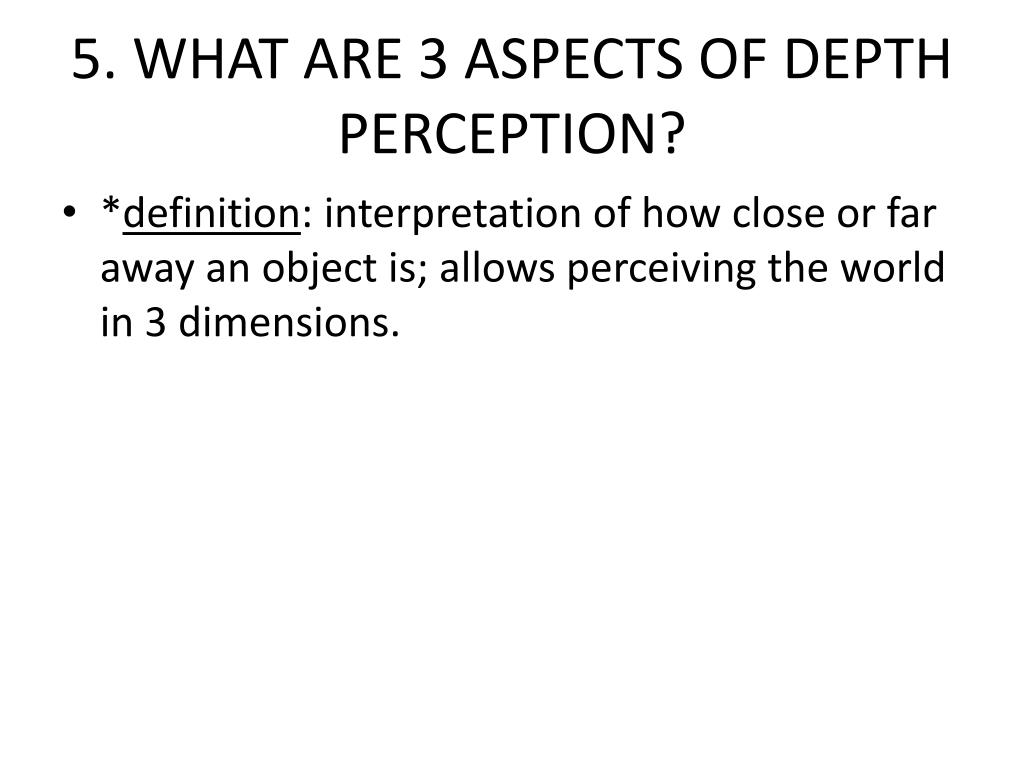

Motion parallax is when you move your head, objects that are close to you will appear to move more than objects that are further away. Sharp focus is when two objects are at the same distance, they will both appear in focus. Accommodation is the change of focus when you look at an object that is close up. There are seven different cues used when using monocular vision. Although it is much less easier to see in three dimensions with one eye, there are cues used to make this possible. Monocular vision is using one eye to perceive images. The muscles used on the outside of your eye gives clues to the brain to tell how far away an object is. Convergence is when looking at a close up image, your eyes angle into each other, going slightly cross eyed. The way vision with two eyes works is that our brain puts together the two images we see in each eye into one three dimensional image. Disparity is when each eye sees a different image because they are spread apart. There are two main binocular cues used when it comes to vision: disparity and convergence. Other cues are also involved including texture. Binocular vision is also better because vision depends on the convergence of both eyes on the single image you are looking at, the relative differences between the shape and size of the image on both retinas and the relative size of the objects compared to each other. When it comes to binocular vision, the relative sizes are compared because you are seeing the image from two eyes and each eye sees the image at a slightly different angle.

Binocular Cuesīinocular vision is using two eyes to perceive images. I believe that animals with eyes on both sides of their heads have better depth perception than humans and animals that have the same eye placement as humans. Humans and animals perceive depth in different ways because of the placement of their eyes. Binocular is better for perceiving depth because you’re using two eyes, monocular cues is seen as a poor way to perceive depth. Binocular cues are when we use two eyes to perceive depth perception and monocular cues are when we use one eye to perceive depth perception. There are two different ways we perceive depth, which are called cues: monocular and binocular. The way we perceive the distance and size of objects are determined relative to the size and distance of other objects. Depth perception also involves our ability to tell how far away an object is to us. Depth perception is the ability to perceive the world in three dimensions.


 0 kommentar(er)
0 kommentar(er)
